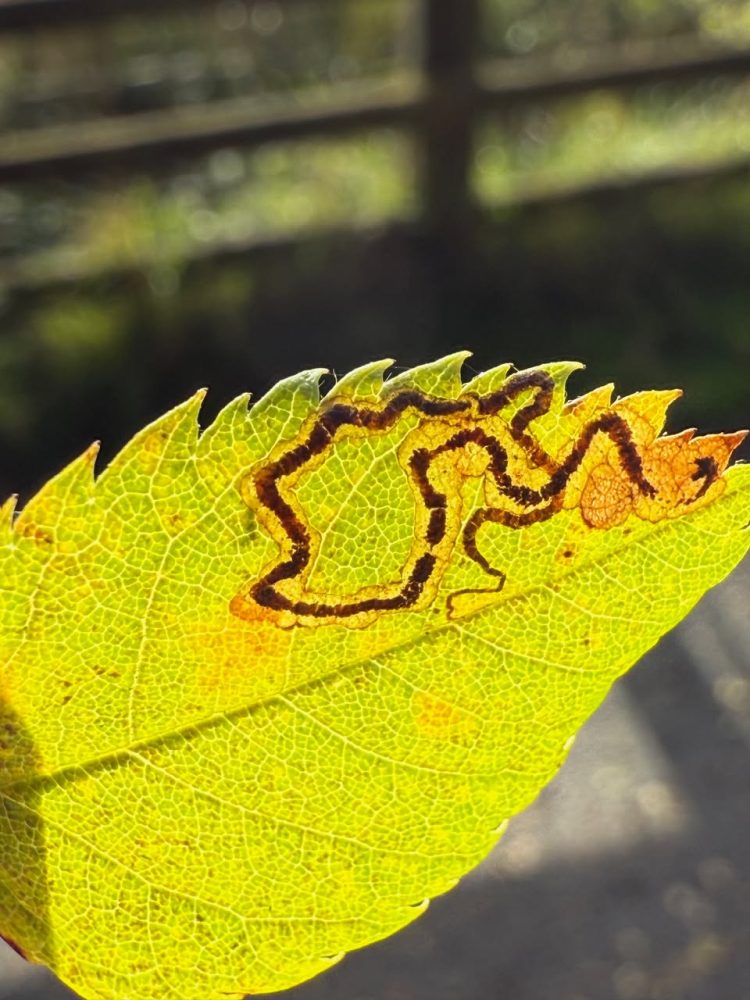There are huge gaps in the knowledge of leaf mines in Derbyshire and there are plenty of opportunities to discover new locations and new leaf mines for the vice-county. I’m gradually gaining more of an interest in this fascinating side of moths.
There is also a new language to learn, such as frass, tenanted and un-tenanted, epidermal layers, leaf petiole and mid-rib etc. We now have to learn botany!! Once a mine has been identified and is an active mine (tenanted), if you have the time and patience the larvae that create the mines can be reared on and the emerging adult can then be positively identified, avoiding the need for dissection. The leaf mines can also be looked for during the months when moth trapping is not so lively. There are now a gradually increasing number of recorders who are regularly submitting leaf mine records, gaining expertise and helping to provide further knowledge of our Derbyshire moths.
When recording leaf mines it is very important to include the following information, so can I ask that recorders take this request on board especially when 1) Entering their records to iRecord and 2) Entering their images to DMFG.
Please ensure that you record – A) The food plant – B) The location – C) The date when mine was found – D) The latin name – E) An image of the entire leaf showing the mine in situ as this will enable our verifiers to see the host plant – F) If the mines were identified by other personnel on other social media platforms, please register the determiner when you enter the record to iRecord. This will help our verifiers when assessing the record. Many thanks.



